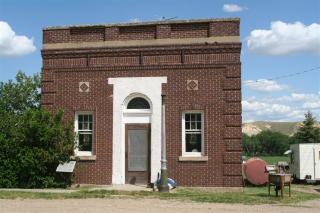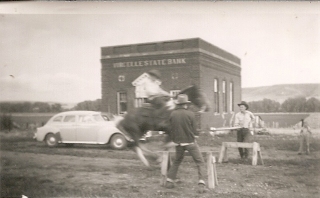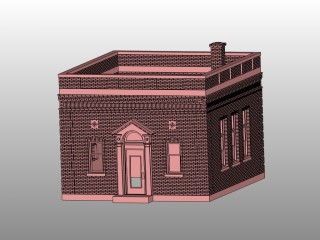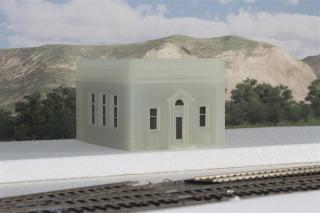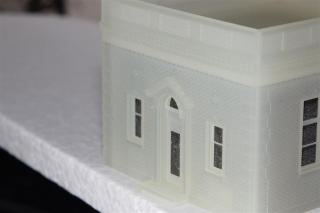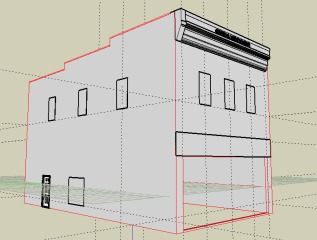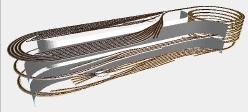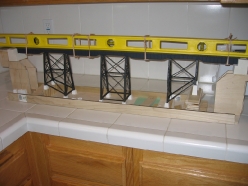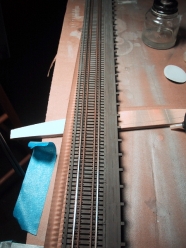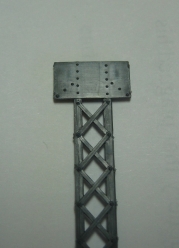The tiny town of Virgelle, MT has but three or four buildings in it. One of them is the Virgelle State Bank. On the National Registry of Historical Places, this structure was built in 1917 when the founders of Virgelle had only optimism for the future. A model of the bank was critical to my Virgelle scene. While it would be possible to build such a structure through traditional means, I was inspired to try 3D printing by Rene Gourley’s article in the March 2012 Model Railroad Craftsman documenting his project to 3D print an HO combine passenger car.
I started my project with the free version of Sketchup, a 3D surface modeling application. Sketchup is fairly easy to learn. To create bricks there was a trick suggested to me to draw the field of bricks on the surface and then press the mortar space back to create the raised brick surface. To print in 3D, the file is exported to stereo lithography format or STL. One of the drawbacks to Sketchup is that it is a surface vs a solids based modeling program. One of the key requirements of 3D printing is that the model is “watertight”. All areas that have thickness must be defined completely closed by surfaces. It turns out that it is easy to violate that rule with Sketchup and while there are tools to help fix the files up, I found this to be a long an laborious process.
The printing process requires the finest resolution possible. The Shapeways frosted ultra fine has a resolution of .006″ which is just enough to resolve the 3/4″ motar gaps. I actually used a service firm called Source Graphics in Anaheim, CA. They have some experience working with model railroad projects and they were very helpful and a little more cost effective than Shapeways. I used their ultra high definition ProJet process which is similar to the Shapeways best.
It was a lot of work but I was very pleased with the results. As you can see I have yet to paint the model but the detail of the bricks exceeds commercial styrene injection molded models. I have started my next model, the Virgelle Merchantile, using a different tool called Bonzai3D. This is a solids based modeler and I am hopeful that I will have a lot less problems producing valid STL files. Stay tuned for progress updates.
